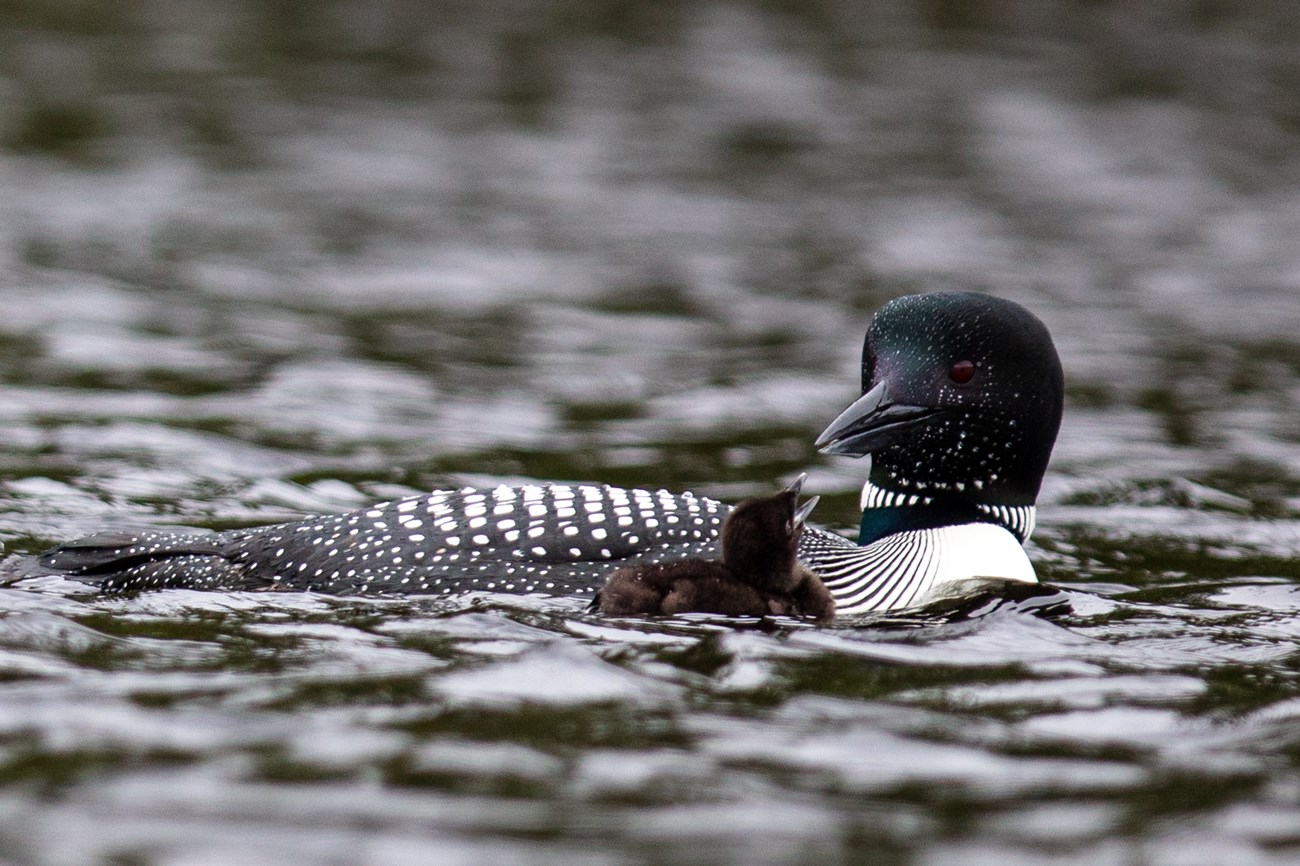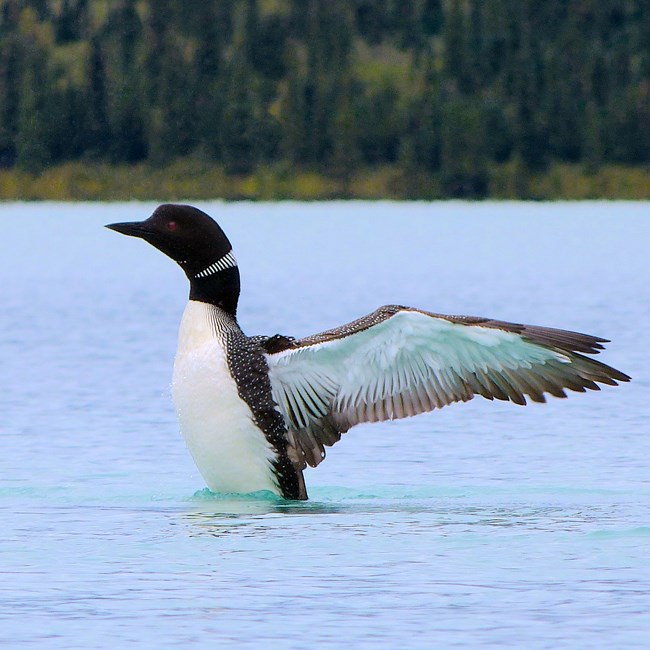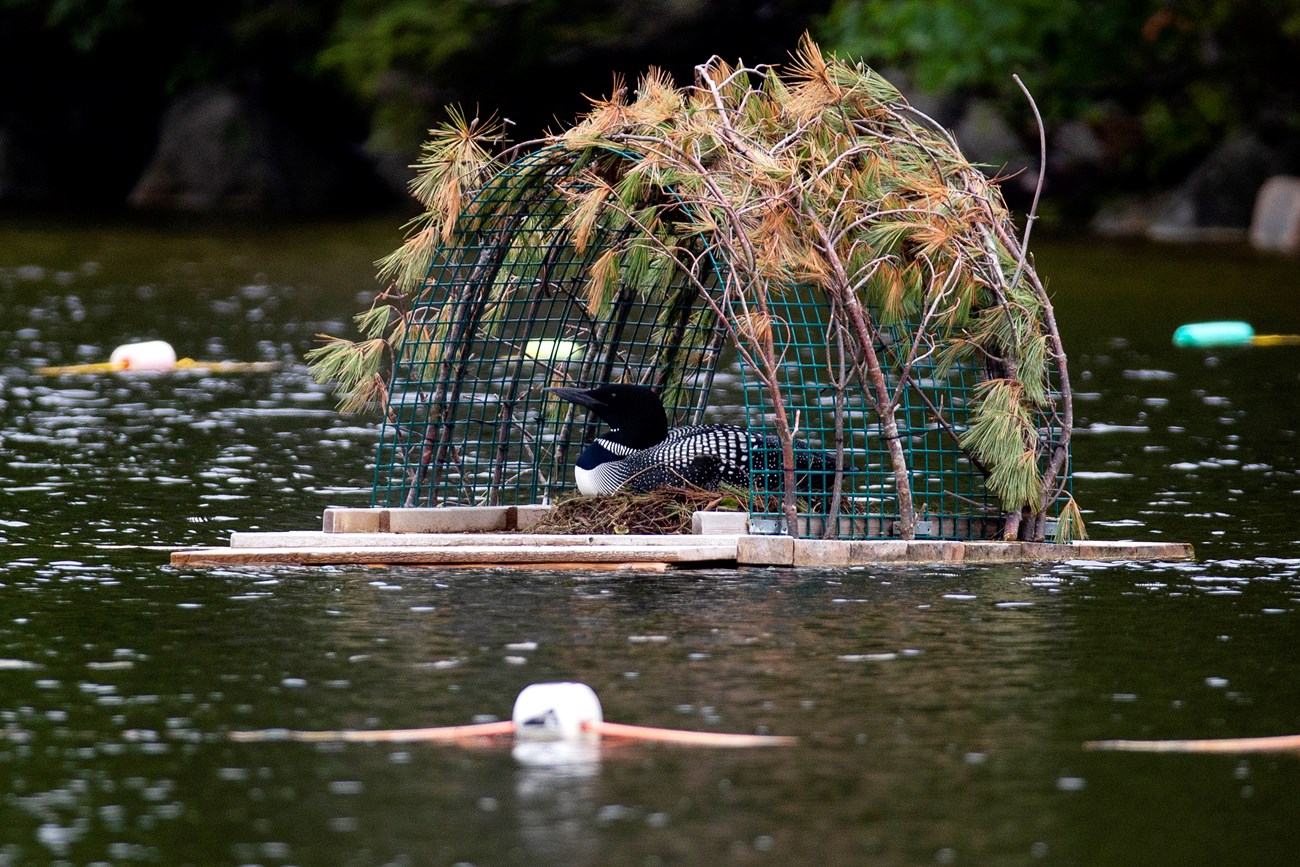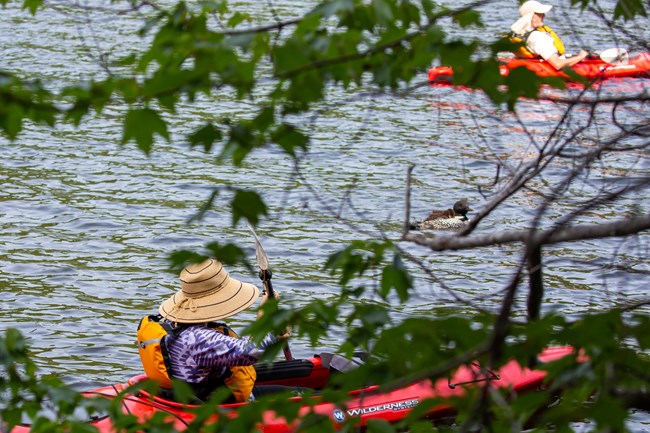
Emma Forthofer/ FOA 
NPS Species ProfileLoons are water birds, so their ideal habitat are lakes and large ponds. In order to see and catch their prey when they dive underwater, clean and clear water is essential. They also prefer coves and hidden quite areas to protect themselves from predators. Also, they choose water bodies that are large enough for them to take flight. Because loons are heavier than most water birds, it is difficult for them to take off, strenuously flapping their wings and running across water. Like airplanes, loons require large and long landing strips to allow for enough room to take off and can fly up to 70 mph. When lakes and ponds freeze during the winter, loons move to ocean coasts and bays, staying close to shore or move inland to reservoirs. 
Photo by Ashley L. Conti, Friends of Acadia, NPS Because loons do not walk well on land, they choose sites close to land. They build nests in quiet and private spots, preferably with a steep drop off to approach from under water. Sometimes artificial nesting platforms or rafts are constructed to encourage nesting. Artificial platforms are an alternative to areas with extensive waterfront development. Often, loons will return to the same nest restoring their old nest, rather than constructing a new one. 
Photo by Emma Forthofer, Friends of Acadia, NPS Viewing LoonsLoons are extremely sensitive to human disturbance. Remember that we share the water with other wildlife. When observing loons keep a respectful distance of 100 feet. Loons chicks do not dive well and cannot move quickly enough to get away. Keep an eye out for nesting sites. Loons can potentially abandon nesting sites if you are too close for comfort. Also, loons can easily get entangled from fishing line, in addition to ingesting toxic lead weights. Anglers must use lead free weights. It is up to Acadia and its visitors to protect these peaceful pond residents. |
Last updated: March 22, 2022
